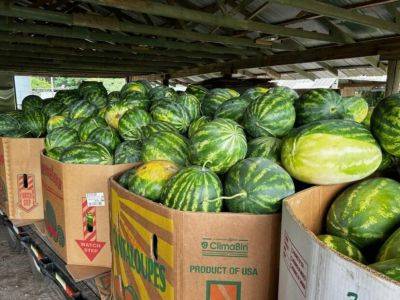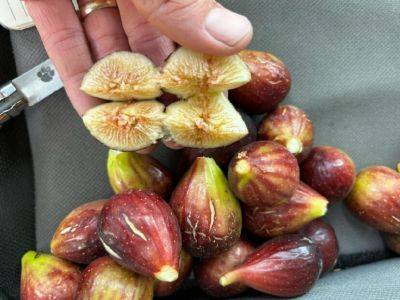Zack Snipes
SC Fruit and Vegetable Field Report November 23, 2020
24.07.2023 - 12:18 / hgic.clemson.edu
Rob Last reports, “Strawberry crops continue to develop well with minimal pest and disease pressure so far. Fall vegetables are progressing towards the market. We continue to see pest pressure from caterpillars, and a few isolated aphids have been spotted during scouting. As we progress towards the holiday season, scouting of crops remains of vital importance to catch insect infestation and disease progression early for treatments to be effective.”
Zack Snipes reports, “The week of wet weather two weeks prior prevented folks from getting out in the fields to spray for insects. I am seeing lots and lots of worm damage, particularly the diamondback moth. We need to get ahead of this pest so that we have good looking greens for the New Year’s Market. The strawberry crops look okay so far this season. The warm weather has really helped later seeded/transplanted crops. I am seeing some die off/rot in root crops in lower-lying areas of fields.”
Justin Ballew reports, “Temperatures got a little cooler last week, with frost showing up in some low lying areas, mostly north of Columbia. The early season growth of strawberries has been impressive so far. As warm as it’s been this fall, early-season row covers probably will not be necessary this year unless plants were transplanted late. Caterpillar population size and damage seems to be on the rise in brassicas.
Tony Melton reports, “Still a lot of sweet potatoes in the ground. The bacterial diseases (Xanthomonas and Pseudomonas) on greens are raging havoc. Rotation is the best control I have found. I hate swinecress when it comes to greens -it takes over. Yellow margined beetle is getting worse in greens and spreading all over the state – Imidacloprid is a good control without
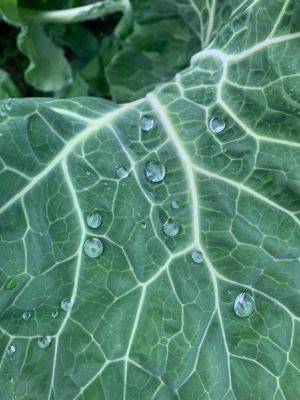
SC Fruit and Vegetable Field Report December 7, 2020
This will be the final update of 2020. We will pick it back up on 1/4/21. Be sure to keep an eye on the upcoming events tab, and give us a call if you need anything. Happy Holidays from the SC Grower team! We hope everyone takes some time to enjoy the season, and may 2021 bring you good health, great family time, and as always…prosperous fields!
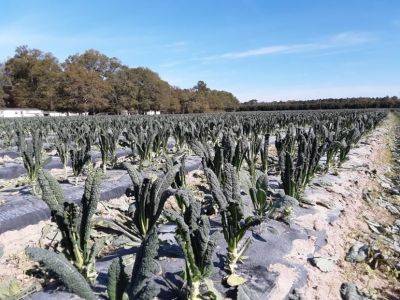
SC Fruit and Vegetable Field Report November 30, 2020
Zack Snipes reports, “After a long Thanksgiving nap, I was able to waddle out in the fields and look at some strawberries. We have had some really good strawberry growing weather especially considering most folks got their plants out somewhat late this year. We need some cold weather to slow them down a bit in places. I have seen a tiny bit of plant collapse and death in some spots within the fields. It is very important to send these plants into our lab to get a positive identification of the pathogen. Phytophthora crown rot and anthracnose crown rot can cause similar symptoms but are managed differently. For information on how to submit a sample during COVID times, click here. I am also keeping my eye on a good bit of leaf spotting in some fields to make sure it’s not the new disease, Neopestalotiopsis. I don’t think we have it yet, but being proactive is better than being reactive. More information on that disease can be found here.”
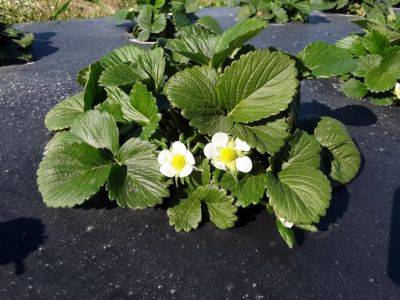
SC Fruit and Vegetable Field Report March 1, 2021
Rob Last reports, “Following a few days of warmer conditions, crops are moving on strongly. Flowering and fruit set is occurring in strawberry crops. At present, spider mites in treated crops are at very low populations, but with warmer weather, populations can increase rapidly. As we are entering flowering and fruit set, sanitation and fungicide applications will be required to keep gray mold managed. Remember to rotate FRAC codes to avoid resistance build-up. Fertigation is being applied, and it will be well worthwhile taking a tissue test from crops. Blueberries in the area are showing bud swell with early varieties showing open flower.”
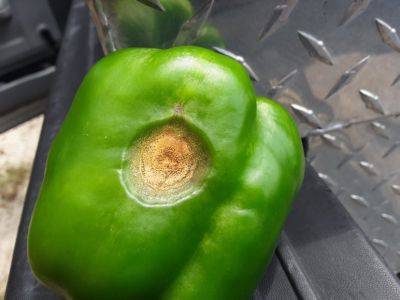
SC Fruit and Vegetable Field Report June 21, 2021
Rob Last reports, “Given the rainfall and humidity levels, we are seeing increases in foliar and fruit diseases on a range of crops. This includes cottony leak in cucumbers, anthracnose in peppers, tomatoes, and cucurbits. Also, please be aware cucurbit downy mildew is very active now. As a result, it is going to be really important to maintain fungicide programs in both a timely manner and to be robust. That being said, we have some great quality melons, both cantaloupe and watermelons, coming to harvest, as well as good volumes of quality peaches, blackberries, and a host of other vegetable crops.”
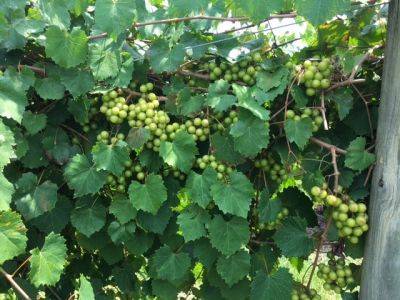
SC Fruit and Vegetable Field Report – July 26, 2021
Zack Snipes reports, “We are in a summer weather pattern with warm, muggy days and occasional thunderstorms. Most crops have finished up or are in the process. Now is a great time to sit down and do some crop planning and field rotation planning. I collected many soil and root tissue samples lately and had them analyzed for nematodes. I was surprised at how many nematodes were present in the fields. Nematodes can interfere with growth, cause stunting, and lower overall yields. Sometimes the symptoms of nematodes can be very discrete, so sampling right now is the best way to get a baseline of your populations and how to properly manage and rotate fields. If left unchecked, thousands of dollars are wasted before the first seed is planted into a field.”

SC Fruit and Vegetable Field Report – July 20, 2021
Justin Ballew reports, “Not much has changed in the midlands over the last week. We’ve received some scattered rain, and it has been warm and humid. As a result, we are still seeing disease issues. We’re still picking tomatoes, squash, zucchini, cucumbers, sweet corn, and a few greens. We’re at an in-between stage in several fields where the spring crops have finished, and folks are preparing to plant fall crops. Some have already started fall cucurbit plantings. For anyone planting strawberries this fall, if you are still deciding which varieties to try, see NCSU’s 2020/2021 variety comparison data (pages 9 and 10).

SC Fruit and Vegetable Field Report October 11, 2021
Rob Last reports, “We are progressing well with preparations for strawberry planting. Some plants are due to be delivered this week. Remember, if fumigants have been used, check to ensure the products have dissipated to prevent damage to the transplants. The same is true to make sure planting restrictions on any pre-emergence herbicides applications are observed. Always refer to the label. Finally, remember to check your plants carefully for pest and disease inoculum from the nursery. Planting any disease or pest-infected plants will lead to a more challenging growing season. If you require any help, please reach to Extension Agents.”

SC Fruit and Vegetable Field Report – November 8, 2021
Zack Snipes reports, “It feels like winter showed up this past week with cold, windy, gloomy days. Most, if not all of our strawberries have been planted. With the cool weather showing up and our later planting dates this year, some growers are opting to use lightweight row covers to push their plants along a little bit. A few things to remember if you opt to do this: use lightweight row covers, make sure all disease and insect issues are taken care of before putting the row covers on, and only leave them on for a few weeks. We want to encourage some growth of our plants, but we don’t want our plants getting too big and succulent going into the winter. I visited several farms this week with poor-quality fruit trees. A common thread between these plantings is planting depth. In our sandy soils, plants will sink over time, so as Phillip Carnley says, “plant them proud,” which means plant them higher than you think they should be planted. Over time, the plants will settle into the correct depth. Pecans, blueberries, and other crops will not grow roots from their trunks, so over time, the plant will rot, and pathogens will get into the plant when they are buried too deep.”

SC Fruit and Vegetable Field Report November 15, 2021
We are currently evaluating the SC Grower site to determine any necessary updates or upgrades to better serve our viewers. To help with this, we would love to have your feedback. This quick survey should take about 5 minutes to complete and is completely anonymous. Please take a minute to share some of your likes, dislikes, or suggestions for the SC Grower
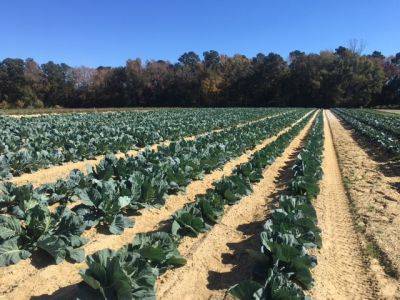
SC Fruit and Vegetable Field Report – November 29, 2021
Rob Last reports, “In our area, pest and disease pressure have reduced in response to cooler dryer conditions. Keep an eye on soil moisture and continue to regularly scout crops.”
